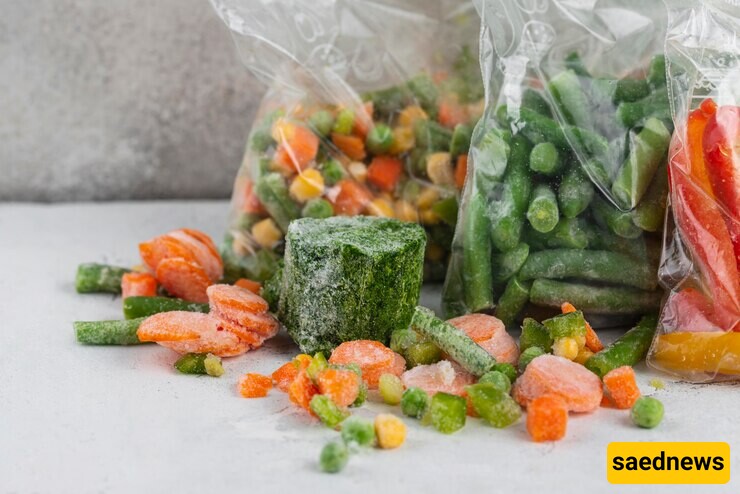SAEDNEWS: The first and most important tip for defrosting food is to avoid immersing it directly in warm or hot water immediately after taking it out of the freezer. This method is harmful to health and is strongly discouraged.

Several popular methods for defrosting food exist, some of which are safe. Placing frozen food on the kitchen counter for a few hours is a common method, but it is not considered safe due to potential health risks.

There are various methods for defrosting food, but some common practices can compromise the quality and safety of food. Here are a few incorrect methods:
Defrosting at Room Temperature Leaving frozen food out in the open at room temperature, such as on the kitchen counter, is not safe. Bacteria grow better at room temperature, and as the food thaws, bacteria multiply rapidly.
Using Warm Water Placing frozen food in warm water or under warm running water is another common but incorrect method. This also promotes rapid bacterial growth. Additionally, using this method for vegetables can result in a loss of flavor.
Using a Microwave for Certain Foods Avoid using a microwave to defrost foods like vegetables or various doughs. Microwaving these items can degrade their texture and quality.
The following are the safest methods for defrosting food:
Refrigerator Thawing Using the refrigerator is the best method. Place the frozen food in the fridge the night before to allow it to thaw gradually. The time required depends on the size of the food.
Cold Water Thawing For quicker defrosting, place the frozen food in a secure plastic bag. Ensure there are no holes in the bag to prevent nutrient loss and contamination. Change the cold water every half hour to ensure it remains cold.
Microwave Thawing Microwaving can be suitable for defrosting, but the food must be cooked immediately after thawing to prevent parts of it from becoming too warm and partially cooking.
Foods intended for long-term storage in the freezer should be frozen quickly to prevent the formation of large ice crystals, which can damage cell structures and cause nutrient loss during defrosting.
If the freezer temperature fluctuates or the door is frequently opened, reduce the storage time and use the food more quickly.
The refrigerator temperature should not exceed 4°C (39°F).
Never defrost food in unsuitable places like the dishwasher, car, non-food-grade plastic, or warm water.
If food has been thawed in the refrigerator and has not been cooked, it can be refrozen, although the quality may slightly decrease.
Cooked food made from frozen raw ingredients can be refrozen for later use.
Do not refreeze food that has been left out of the refrigerator for more than two hours or has been exposed to temperatures up to 30°C (86°F) for over an hour.
If meat or poultry is purchased frozen, it should be kept frozen if the size and packaging are suitable.

